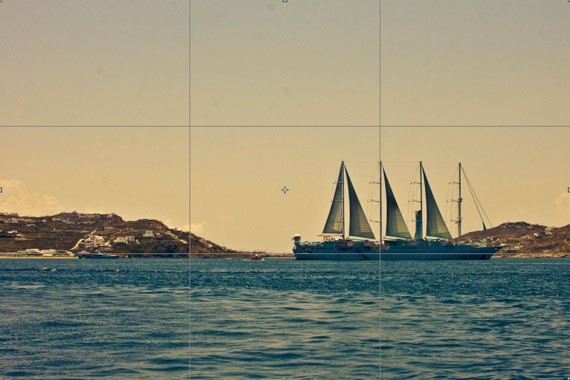The photographer who took this picture successfully managed to balance the girl while leaving the image to be off center. The eye flows from the left, down towards the left wheel, curves around to the other wheel, and then curves around to land the final focus on the girl.
The possible intentions of the photographer in creating this image is to create a fluidity within the image while not allowing the girl to be centered in the frame. This imbalance allows the eye to flow through the scene and also notice the other details presented.
Image found on photoinf.com
This image is also off center but it, however, is not balanced in any way. It is difficult to discern which part of the ceiling or wall is the focal point of the image and the clashing point of the two circles distract the eye from the other parts of the image. While the picture is beautiful and crisp, it is unclear what the audience is supposed to focus on.
The possible intentions of this photographer were to showcase the beauty of the architecture as well as the grandeur.


These two images are not balanced. The first is placed too far into the right corner of the frame which creates the need to shift it down towards the center or simply down a bit. The second is centered but is still not quite balanced; the frame either needs to be shifted up or downwards slightly for the image to feel balanced.
Images by Megan Arnold (me).


The two images above are balanced. The first is centered so that it is clearly the focus of the image and doesn't have an entirely plain background. The second is placed off to the bottom left corner of the frame and this creates the space and motion for the eye to wander the piece more than it would otherwise.
Images by Megan Arnold (me).








